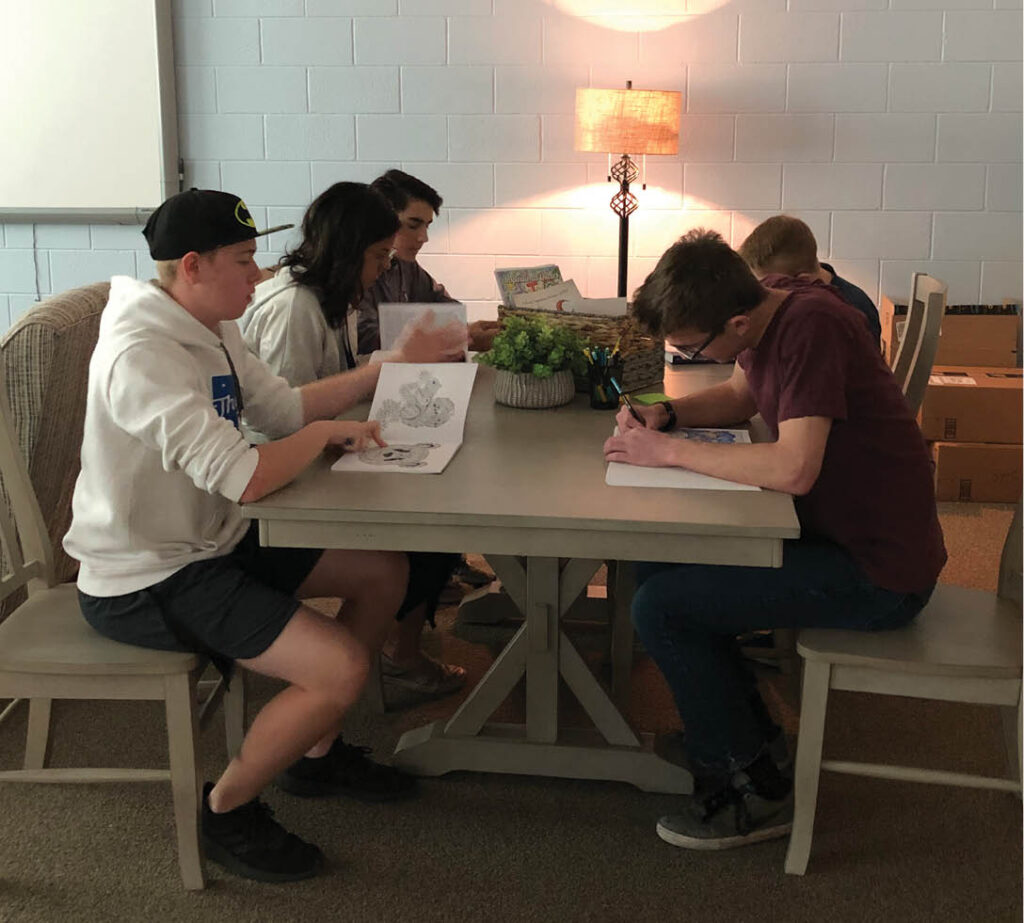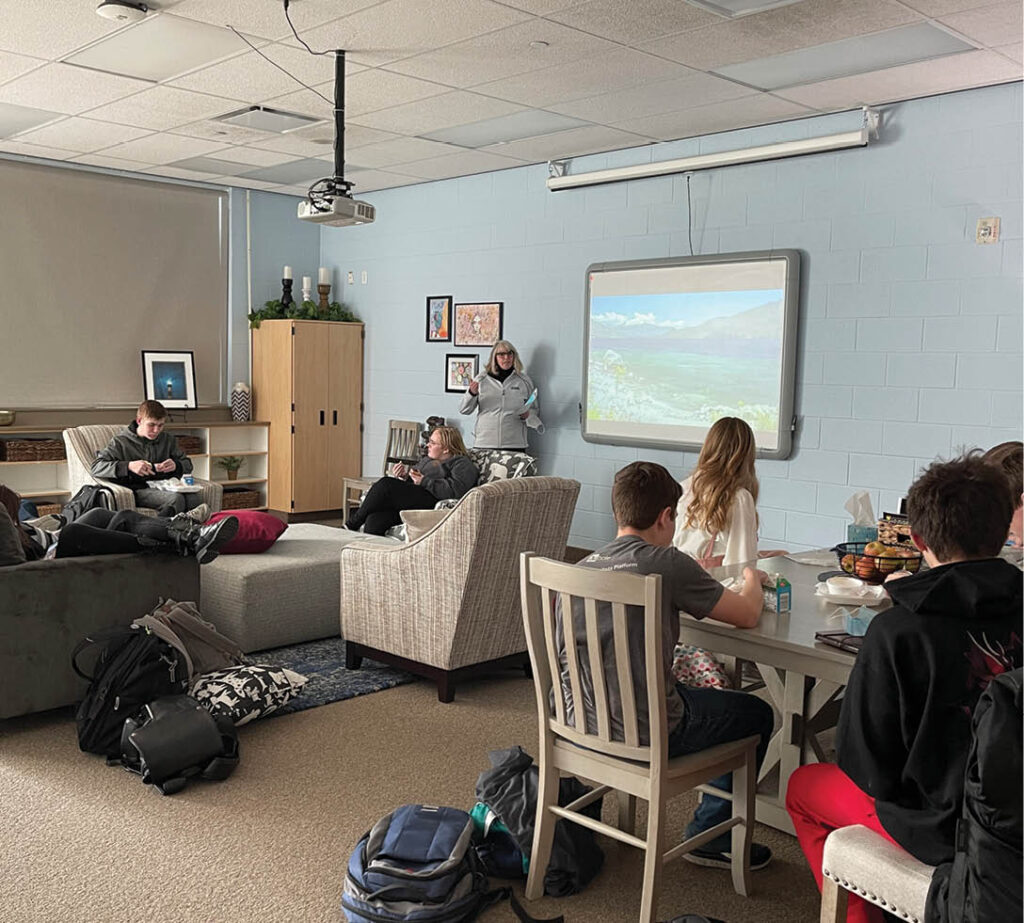Viewpoint: November 2023
Three years ago, the high school where I was working as an assistant principal struggled to cope with the suicides of three students. Knowing we had to do something to address the resulting stress, anxiety, and charged emotions among the student body, within a matter of months, we established a wellness center on the campus of Westlake High School in Saratoga Springs, UT.
The center made a substantial difference to the school and the students. We had people from all over Utah, and in fact, from around the country, visit to learn about our model. We ended up partnering with researchers at Brigham Young University to assess the impact of the center, and a study, “Addressing Adolescent Stress in School: Perceptions of a High School Wellness Center,” showed it was working. “Stakeholders had positive perceptions of the wellness center,” the study concluded. “In particular, results implied that stakeholders believed the wellness center contributed to students’ academic success, elevation of mood, confidence, and coping skills. Results also suggested that attendance at the wellness center was associated with a decrease in student stress and anxiety.”
Now, in my second year as the assistant principal at Lehi High School in Lehi, UT, we’re considering establishing a wellness center here. Tragedies like student suicides certainly bring the need for one into focus, but I believe it’s something that could benefit every secondary school. In fact, a student recently emailed me a letter that she and some friends had written, urging us to create a wellness center in our school. They had heard about centers at other schools.

A Big Impact on Attendance
One of the biggest improvements we saw at Westlake was in student attendance. So many times, when you have students who are struggling emotionally, they are the ones who end up in the bathroom crying. They end up calling mom and asking if she can pick them up. They leave school, and they aren’t in class. Having a designated space with somebody there who can help them and teach them how to cope and learn their own strategies can really work. Students know they have a place where they can spend 20 or 30 minutes to decompress, help recenter themselves, and then return to class. I had a parent tell me that with the help of the wellness center, her son stayed in school for a whole week for the first time.
Thanks to the wellness center, our student discipline referrals also dropped significantly. There’s usually a reason behind behavior problems. Kids acting out doesn’t necessarily mean they are just being bad. The wellness center helped our teachers recognize that asking a student to stay out in the hall, or calling their parents, or sending them to me because they are misbehaving doesn’t really work. Instead, they could ask if the student needed to go to the wellness center to calm down, and maybe they were hungry and just needed something to eat, which they also could do at the center. It was definitely a big help to teachers.
My firsthand experience, as well as the results of our study (which included interviews with students, parents, staff, and others), taught me a few things that could help other school leaders who want to establish a wellness center on their campuses.

Staffing Is Crucial
The best part of our wellness center was Janet Harkness, the center’s coordinator, and it’s clear that she had a huge impact on the kids. You need the right person—someone who is trained and is there full time so the students can get to know her and develop a relationship—so they feel comfortable. One time when Janet was sick, I was helping in the wellness center. A girl walked in and asked, “Is Janet here?” When I said no, she turned right back around and left. I have seen other schools give the responsibility for running the wellness center to their counselors, who rotate shifts, but I don’t think that’s as effective as having a dedicated person.
Schools also must carve out a designated space for the center. We were lucky at Westlake to have a beautiful room with outside windows, but you can get creative with less. I’ve visited schools that have been able to convert a small conference room or similar space into a wellness center.
There also will be some costs. To offset those, we partnered with a local nonprofit, the IM Foundation, that paid Janet’s salary. And we worked with them to raise money to furnish the room and make it comfortable. We also put out an Amazon wish list, primarily for parents to donate to the center, and it was filled within an hour, mostly with things that students use in the room, like a Zen garden, putty, weighted blankets, and books. A local furniture store matched our spending, which helped us get some nice seating and tables, and a local paint store owner donated the paint. He told us his nephew had once attended the school and really could have used something like the center when he was there.
So many people I talked to when we were raising funds have been touched by mental health crises and suicide. They are more than willing to help; they just need to be asked. We also made a video with students talking about the center, which was very powerful.
Involve Your Stakeholders
It’s important to involve all the stakeholders as you proceed. Since this center is for the students, they need to have a say in how it looks and feels. That’s why we included students on our planning team, along with the head counselor, the social worker, teachers, and a PTA representative, and then we built the center following the IM (Foundation) model. Buy-in is crucial to the effectiveness of the center.
It can make sense for an assistant principal to take on a school wellness center project, with support from the principal and district administration. But for me, it had less to do with my position than with my passion for this, and I knew it was something that needed to be done.
Whatever the location, or the structure, or the staffing, I strongly believe that every school should have a wellness center. The benefits are clear, and it should just be a part of how schools operate.
Jennifer Bitton is the assistant principal of Lehi High School in Lehi, UT.
